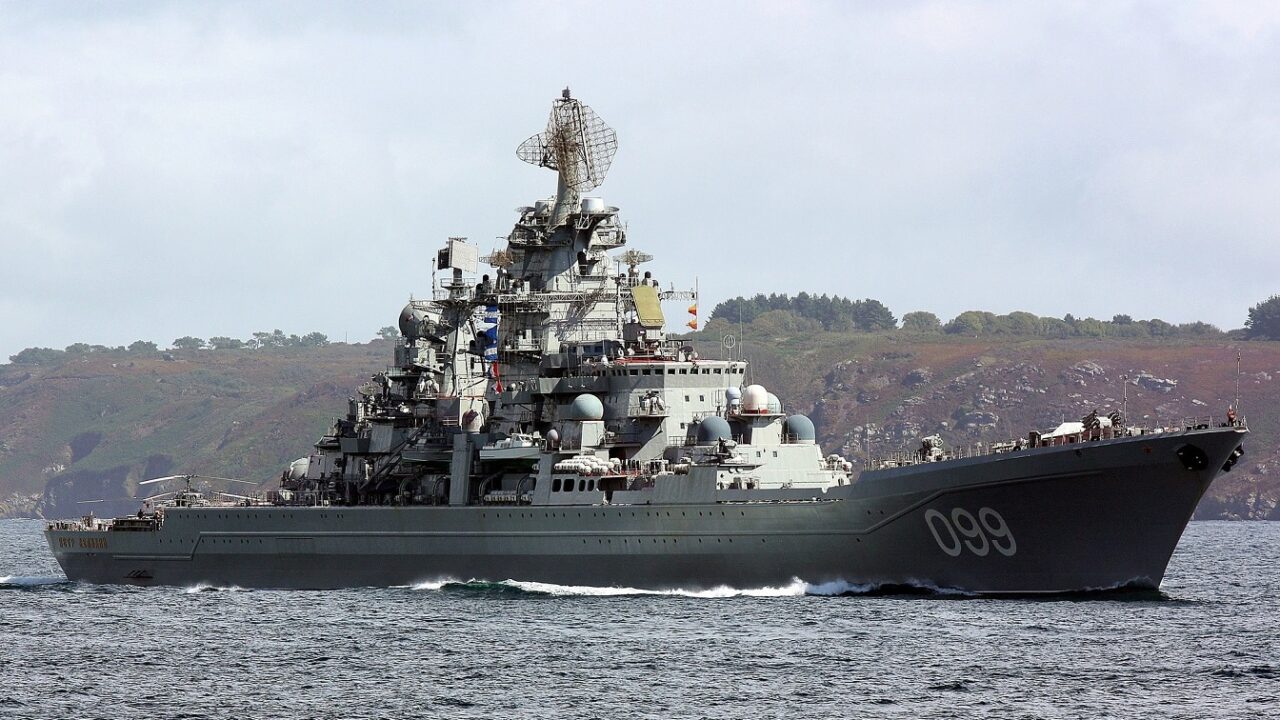The maritime angle of the Ukraine crisis is heating up in unexpected ways.
Russia appears to be positioning its amphibious forces to help encircle Ukraine. Six Ropucha class amphibious assault ships left the Baltic and have entered the Mediterranean, possibly en route to the Black Sea. The Ropuchas each displace around 4,000 tons and lack significant aviation capability, with their main mission being the delivery of troops and tanks ashore. The transfer of the ships is representative of Russia’s age-old maritime dilemma; its major naval bases are inconveniently positioned at a great distance from one another, which makes it difficult to mass forces for mutual support. The transfer of ships from the Baltic has been quite public, but that may serve Russia’s larger purpose of attempting to coerce the Ukrainian government into some kind of settlement.
It is perhaps fortunate that Russia was not allowed to acquire Mistral-class amphibious assault ships from France. In 2010, Moscow struck a deal with Paris to purchase two of the 21,000-ton flat-decked assault ships and to build another two under license. The United State immediately brought pressure to bear on France, but Paris persisted with the construction of the vessels until 2015 when it finally canceled the deal following Russia’s annexation of Crimea. The two ships were later completed and sold to Egypt. Compared to the Ropuchas Russia is transferring to the Med, the Mistrals would have offered a far more formidable aviation and command capabilities, putting Ukraine’s littoral at even greater risk.
Much of the rest of Russia’s navy is also busy. The Russian Northern Fleet (which normally operates out Severomorsk) is conducting exercises in international waters off Norway. Other exercises are being conducted in the Indian and Pacific Oceans. Russian vessels have even conducted naval drills off Ireland. It is unlikely that any of these units could contribute to the Ukraine conflict, but their activity should be read as a message to NATO and an indication of Russia’s seriousness. The only major units that appear not to have deployed are the aircraft carrier Admiral Kuznetsov (which remains in long-term refit) and the nuclear-powered battlecruiser Peter the Great.
What about the Ukrainian Navy? Well… for the most part, there isn’t one.
When Russia occupied and annexed Crimea in 2014, it captured most of the Ukrainian Navy. It returned a few of the older vessels but then suspended all cooperation with Ukraine. This has left Ukraine with only a single major warship (the 3,500-ton frigate Hetman Sahaydachniy) which was on deployment when the conflict began. Ukraine has a couple of dozen smaller vessels, all under 500 tons.
What does this all mean?
The potential transfer of the Ropuchas to the Black Sea enables the Black Sea Fleet, already vastly more powerful than the Ukrainian Navy, to put Ukraine’s coastal regions at risk. Russia already holds overwhelming superiority on land and in the air, but it’s conceivable the fleet might want to grab strategic points along the coast in anticipation of a cease-fire that would freeze forces in place. In this scenario, Russia could negotiate for concessions in other parts of the country, or simply hold onto the captured areas and cut Ukraine off from the sea. This would give Russia an enormous degree of leverage over the rump Ukraine in the future.
Ukraine has no good options. Building up its fleet would have been a poor use of resources given the overwhelming land and air threats posed by Russia. And as 2014 demonstrated, decisive victory on land can make a fleet irrelevant in any case. One option for Ukraine would be to effectively “borrow” a navy by joining an alliance, but that appears to be off the table for a whole host of reasons.

Image of President Putin reviewing a Russian Navy submarine.
In any case, the active deployment of warships around the world is yet another indication of Russia’s commitment to leveraging this crisis.
Now a 1945 Contributing Editor, Dr. Robert Farley is a Senior Lecturer at the Patterson School at the University of Kentucky. Dr. Farley is the author of Grounded: The Case for Abolishing the United States Air Force (University Press of Kentucky, 2014), the Battleship Book (Wildside, 2016), and Patents for Power: Intellectual Property Law and the Diffusion of Military Technology (University of Chicago, 2020).

